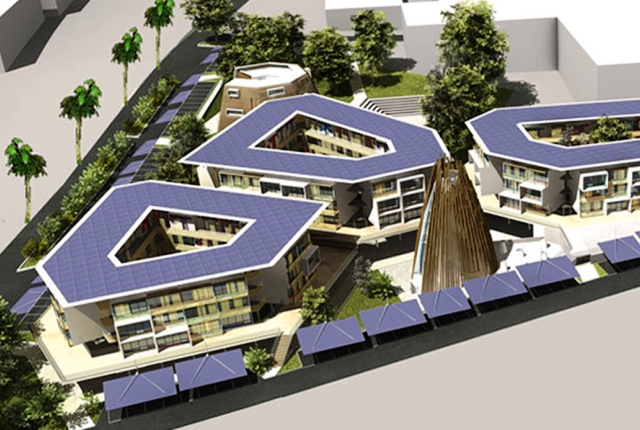
Fil-Italian company shared know-how, demoed with a sustainable condo, and pushed to make sustainable building the ‘new normal’
In a tumultuous 2013 that saw millions of Filipinos suffer from two huge disasters, an innovative first mover in the green and sustainable property sector contributed its bit to help the country get back on its feet — and prepare for the future.
While ITPI Corp. (Italpinas Euroasian Design and Eco-Development Corporation) forked out only a small part of its earnings to help disaster survivors, it shared hugely of its real wealth: experience and know-how on building for extreme conditions.
Over the course of the year, the green property firm took time out from its hectic property development schedule to advocate for sustainable building practices, as well as to publicly share tips on how to build eco-friendly properties and robust structures that can withstand typhoons, earthquakes and similar catastrophes.
Responding to the turmoil brought by Yolanda, the ITPI executive chairman and CEO offered free advice on how to build in the extreme conditions that are part of what he called “this new reality of deadlier and more frequent catastrophes induced by climate change”.
Formed in 2009 by executive chairman and CEO Architect Romolo V. Nati and his Filipino partner, Atty. Jojo Leviste, ITPI is a young property developer, but it has quickly taken the lead in sustainable mixed-use developments in the country’s secondary cities.
Primavera Residences: proof of concept
As proof of concept, ITPI’s first property development in Cagayan de Oro City is a mixed-use condominium complex found in the prime location of Pueblo de Oro Business & IT Park that incorporates many sustainability features.
Called Primavera Residences, the two 10-storey twin towers were designed using state-of-the-art computer software that simulated how the structures would react to various strains, helping ITPI design these to withstand strong typhoons and earthquakes.
The two towers are also designed to use a combination of passive cooling strategies and active renewable energy production from photovoltaic or solar panels to reduce overall energy consumption.
“The best principles of passive building technology — shadow and sunlight control, wind cooling and shape performance — have been used in Primavera Residences,” said Arch. Nati.
The same architectural features that make Primavera Residences green also function to make Primavera Residences ‘typhoon resistant.’ “This is why the building survived typhoon Sendong, which hit Cagayan de Oro in 2011,” Arch Nati explained.
“While the location (110 meters above sea level) saved the tower from massive flooding at the height of Sendong, it was the passive cooling features that mitigated the strong winds’ impact on the building,” he said.
Green buildings are good investments
Units in both buildings have also sold quickly – allowing ITPI to demonstrate the viability of building eco-friendly buildings that are elegant but affordable.
The first tower, completed late in 2012, is almost fully sold-out. Tower B is also around 30 percent sold-out, even if its construction is also around 30 percent complete. To be launched this February, construction of this second tower is expected to be completed by the third quarter of this year.
Aside from the psychic reward that comes from helping save the planet, buying eco-friendly homes are also good investments, according to Atty. Leviste.
“Green properties like Primavera Residences are also a very good investment because they give owners huge savings in maintenance and electricity costs,” the ITPI President said. “They are also more disaster-resistant and their value actually grows with time — retail sales of green buildings increase every year,” Leviste added.
The ITPI President also noted that green properties are appraised 10% to 15% higher than conventional properties by the United States Appraisal Institute.



